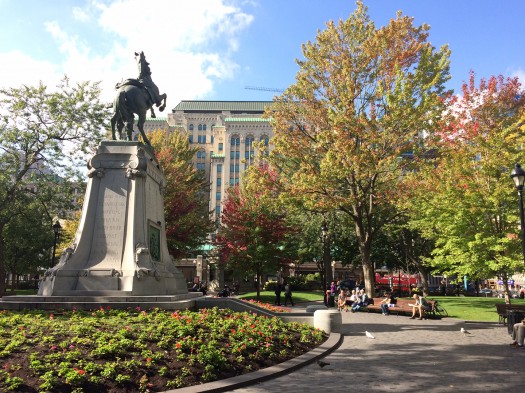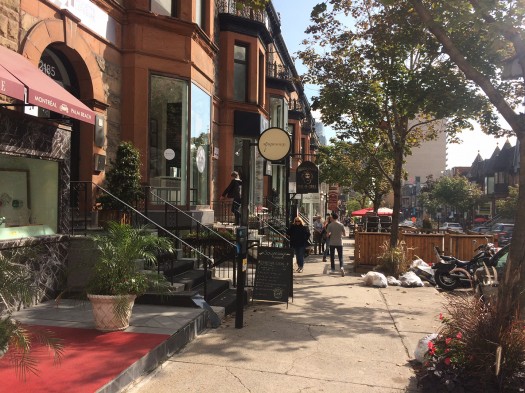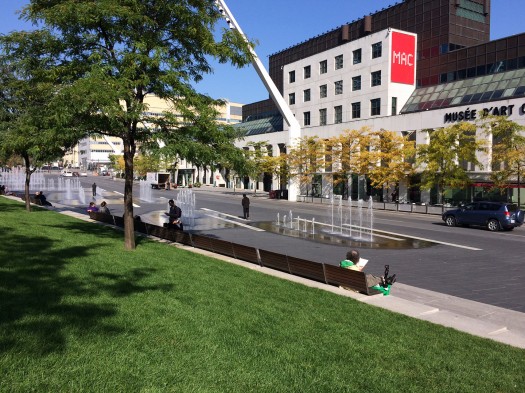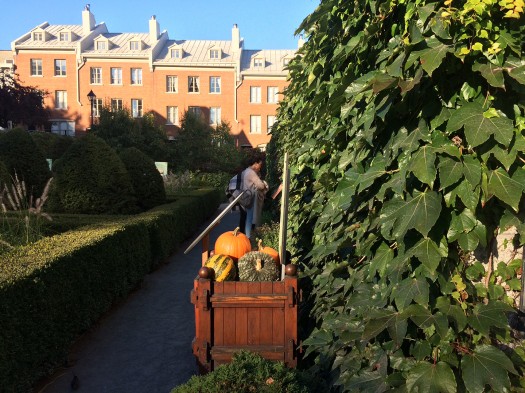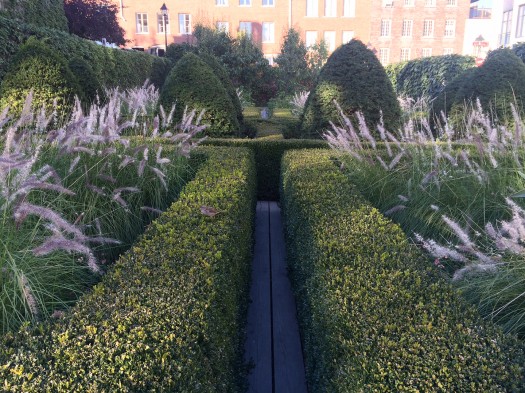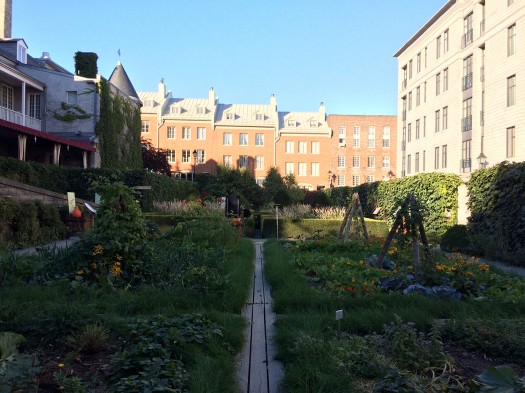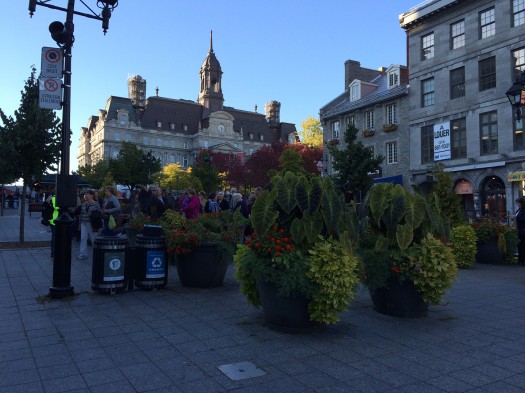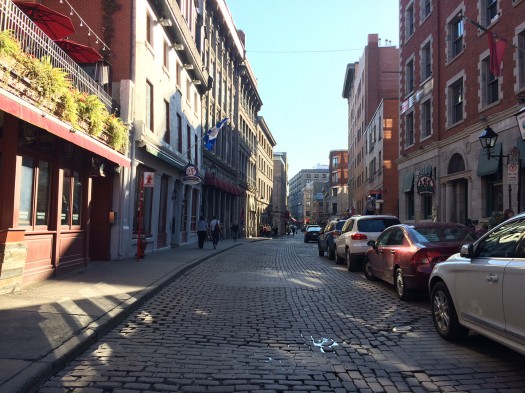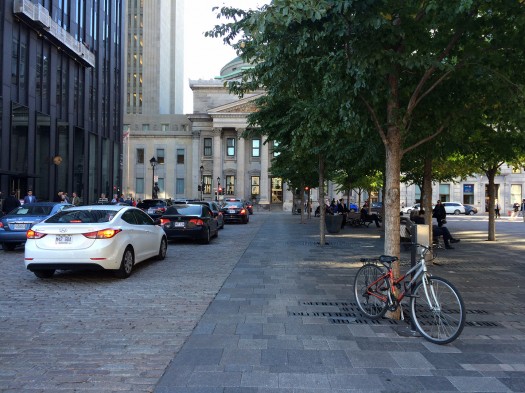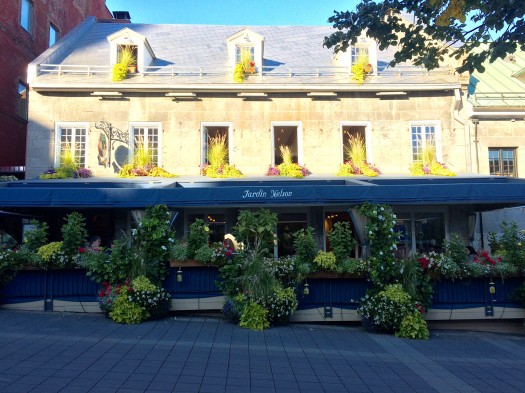A Placemaking Journal
Nature’s Healing Ways
The other day while walking my dog, I was trying to count the ways nature makes us healthier, as a means of distracting myself from the fact that the temperature was -40, with wind chill. That’s the point where Celsius and Fahrenheit converge. However, since this is my 9th winter in my beloved Winnipeg – one of the three coldest big cities on earth – I was dressed for the occasion and was keeping to the sidewalks in the active core. Here tight setbacks and street trees provide shelter from the wind, neighbourhood shops and cafés offer places to stop in and warm up, and short blocks provide plenty of places to turn around when the time is right.
We’ve written before about how walkability mitigates the most extreme environments. And how the form of our neighbourhoods make a difference in how healthy we are. Project for Public Spaces goes as far as to say that your zip code is a more accurate health forecast than your genetic code. That was part of the launch of their new report this month, The Case for Healthy Places, which points out:
Placemaking is one of the most powerful things we can do to address physical and mental health as well as revitalize democracy and add more conviviality to our lives. It supplies us with a sense of belonging, which creates resilience and well-being.
The report collects peer-reviewed studies on the healing power of nature. Direct health benefits of green places include increased physical activity, better cardio health, reduction in depression, anxiety, and stress, increased attention and memory, decreased obesity and diabetes, increased social capital, reduction in violent crime, and improved air and water quality.
These subjects are increasingly important, with U.S. life expectancy in decline for the first time since 1993, according to a December report from the U.S. National Center for Health Statistics. Three out of the top four culprits for our shorter lifespans are heart disease, diabetes, and Alzheimer’s, all of which are impacted by the forms of our built environment, and how well we integrate nature into cities.
My fellow PlaceMaker, Kaid Benfield, writes extensively about these connections in his book, People Habitat:
We humans have an intrinsic emotional need to connect with the natural world. The eminent biologist E. O. Wilson first called this affinity ‘biophilia,’ and the term has stuck. Yet cities also, and fundamentally, need the structure of hardscape urbanism – streets, buildings, and infrastructure – in sufficient density to achieve environmental and economic efficiency and nurture social bonds. It is critical that we incorporate nature into cities, but we must do so in a way that supports urbanity rather than replaces it.
We’ve blogged extensively about the impacts of urban form on happiness and wellbeing but only skim the surface of the impacts of nature that books like Happy City extol. The book’s author, Charles Montgomery, weaves together a litany of studies and concludes:
Even tiny splashes of nature create a psychological ripple effect. … We know that nature in cities makes us happier and healthier. We know it makes us friendlier and kinder. We know it helps us build essential bonds with other people and the places in which we live. If we infuse cities with natural diversity, complexity, and, most of all, opportunities to feel, touch, and work with nature, we can win the biophilic challenge. Quite simply, biological density must be the prerequisite for architectural density.
With taking a little time off to be with family over the holidays, I intend to try some forest bathing – shinrin-yoku – or long walks in woodlands with electronics suspended. This formalization of a walk in the woods in the 1980’s by the Forest Agency of Japan was in response to our overly busy modern lifestyle where we constantly activate our fight or flight response to our detriment. Bathing all five senses in nature decreases stress indicators adrenaline and cortisol and increases cancer-fighting “natural killer” cells, not just for the duration of the walk, but for a week or more afterwards. I’m thinking that should take me handily to my new years resolutions with a little of nature’s healing ways. A topic I’ll be addressing on a January 25 Art in Bloom talk in Winnipeg, if you’re in my neck of the woods.
So whether it’s walking down a tree-lined street, or forest bathing in regionally scaled wilderness parks, we must keep designing and legalizing green places that tempt us to get outside and active. For a little inspiration, here’s a collection of one of my favourite urban people habitat experiences this autumn, thanks to the delightful city of Montréal.
All images CreativeCommons ShareAlike License, with Attribution to Hazel Borys, 2016. Click for larger views.
–Hazel Borys
If PlaceShakers is our soapbox, our Facebook page is where we step down, grab a drink and enjoy a little conversation. Looking for a heads-up on the latest community-building news and perspective from around the web? Click through and “Like” us and we’ll keep you in the loop.









